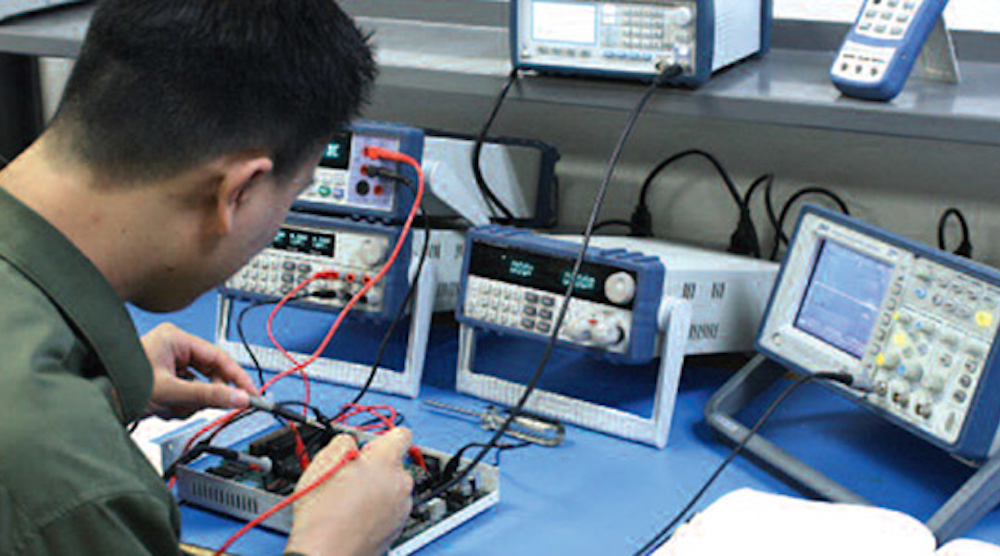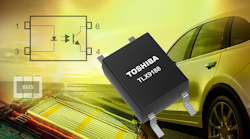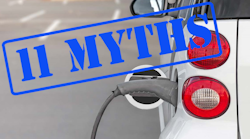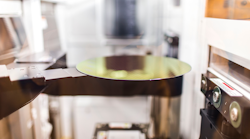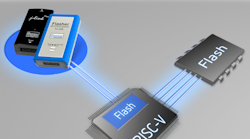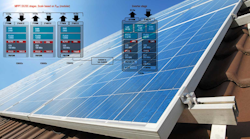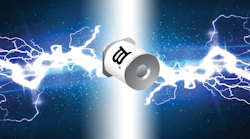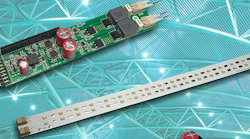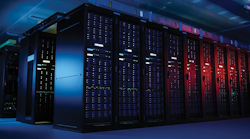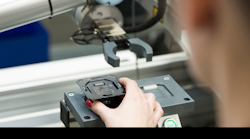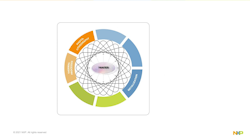我们正在陷入一个技术renaissance, where new solutions based on new technologies are creating new functionalities to address new application spaces (as well as empower old ones). However, there is a lot of power infrastructure required to support all of the electronic systems involved, and it must all be evaluated, verified, and managed to ensure proper, safe, and optimum performance.
Test and Evaluation is a “Red Queen's Race” where you have to run as fast as you can just to stay in the same place. In the area of power, this race has been complicated by challenges presented by new materials like wide-bandgap semiconductors, and the advanced power topologies they both enable themselves and inspire in silicon to keep up. Being able to test and evaluate the latest power conversion and battery-charging solutions is vital to staying competitive.
We reached out to Jeremy Lo, Senior Engineering Manager, and David Holt, Senior Director of Product Management & Sales, at BK Precision, to talk about some of the challenges they are seeing in the power test space, and some of their latest solutions to address them. The company’s latest release, the 9140 family of triple-output multi range DC supplies, provides three isolated and individually controllable outputs.
The 2U half-rack device delivers up to 300 W of power with low ripple and noise, or 100 W per channel. A 4.3-inch LCD, output terminals that support sheathed banana plugs or spade-lug connectors, and advanced list mode programming, data logging, and extensive protection, address a wide range of test applications. Enhanced features include list sequencing and step triggering for synchronizing events, and list mode programs can be assigned to run on one or multiple channels simultaneously. Output sequencing allows users to link the output states between multiple channels with configurable on/off delays (Figure 1).
EE:In a recent discussion we had the point came up that there's no electronics without electricity, and power is a fundamental analog process. What are your thoughts on that?
David霍尔特:I think you summarized it pretty good. We need power in order to run the electronics, and of course, there's different ways to measure that. You can use power meters. You can use shunts. There's a lot of different approaches, and we support those different approaches. And batteries, of course, are a way to store the energy, and using your analogy, it's not enough to store it. You have to be able to take it back out. You have to consume it. In that regard most engineers want to know, "How much power have I put in? How much power have I taken out?"
They also want to understand things like power density. How much can I store for a given space used? And they want to know things like, how does this battery storage system work in an environment like extreme heat, extreme cold, and so on? How much energy can I take out at one time without damaging it? So there are lots of factors to deal with.
EE:here are common threads. You know, the battery storage or uninterruptible power system at a server farm is different in physical size and scope than an electric vehicle battery, but as you're saying, when it comes to getting the power in and out, aren't they pretty much the priorities in both application spaces? Or is it really depending on the application space, how much each aspect is important?
霍尔特:Well, in an automotive it's very difficult because of the weight and the size. The chassis has to be able to support that, and that affects the overall performance of the vehicle. Having the availability of more power is what gives you the distance and range on the vehicle, but right now in current physics, everybody that's making electric cars, there's no major breakthrough yet in battery technology. It's right around the corner, it seems, but they're still using lithium-ion batteries and you get a certain power density there, and they're heavy and they take up quite a bit of space in the vehicle. Right now the technology is getting into the 300, 400 mile range, but they take quite a bit of time to charge. So, it is the classic problem, getting the energy in and back out.
较新的车辆现在正在运行800伏系统,因为这可以使您能够进出能量,而这些生产车将在2021年在线,例如保时捷和一些新的韩国汽车。因此,这仍然是同一场战斗,从电池制造商的角度来看,他们面临着挑战。这些电池的用户是整合它们的人。EV动力总成是非常苛刻的系统(图2)。
他们有不同的测试挑战。如果你在厕所king at each individual cell and the battery stack, does the vendor you picked supply battery cells before you assemble the package, and assemble them into a stack? Do these things meet my incoming inspection needs? That's a challenge that a lot of people are taking on, more and more people are taking on because it's not just cars. There are now electric aircraft as well that are coming online, of all different types.
EE:How much of that proofing is worries about counterfeit cells and how much of that is to just ensure production quality of what you're receiving?
霍尔特:两者都是。我的意思是,你必须。作为一个电化学过程,与仅处理芯片相比,变量要多得多。即使在制造过程中,也会发生某些事情,制造商可能会非常感兴趣,并且做得正确,并且食谱的略有变化可能会搞砸。我认为很多人正在进行检查,甚至有自己的内部规则。他们可能会说:“不。我们必须完全循环该电池。我们必须充电,并在我们开心之前在给定的很多电池上完全放电几次,”这是实时的东西。这很耗时。他们要做的另一件事是监视温度。因此,他们将在我们现在正在寻找的东西的帐篷下窥视,在您进行这种类型的骑行时,我们可以监视温度。
EE:Well, power management is thermal management, right? I mean, they're hand-in-hand.
霍尔特:Yes, and interesting enough, there's a lot of hobbyists and makers, entrepreneurs. We get a lot of phone calls. They're experimenting in their basements, and sometimes they're working with lead-acid batteries, which is okay, but it's also dangerous. If they are charging a stack of lead-acid batteries and they forget about it in the basement and they go to dinner, and they come home, and their house has burned down.
EE:And the neighborhood with it.
霍尔特:This happened to one of our customers, and we were pretty shocked by that, and I'm like "Wow." And they're like, "Totally my fault. I really made a mistake," and they buy the latest power supplies. "I want to do it again." And I'm like, "I hope you take more safety precautions." And they said, "Absolutely."
EE:Oh, my goodness.
霍尔特:Well, as you probably know, when you're charging lead-acid batteries, the gas that comes out of there is hydrogen.
EE:Hydrogen, kaboom. My father was an auto mechanic, and I'm a jack-leg wrench-turner, but I remember when he was charging batteries, it was dangerous, and those were just 12-volt car-start batteries.
霍尔特:是的。有很多人正在尝试这一点,他们不喜欢谈论他们在做什么,因为他们认为他们已经找到了圣杯。这真有趣。
EE:好吧,这样说,如果您有存储,您有圣杯,对吗?
霍尔特:是的。这是一个存储元素,有些人正在使用它的各个级别。它们是不同的化学和不同类型,甚至是飞轮能量。它的整个地图,电容器,然后在另一侧,负载;您想放电您的存储系统,但要在科学过程中将其放电,以便您可以评估发生的事情。
EE:How much of that is one-offs and how much of that is automated test?
霍尔特:It depends on the customer, but we provide a free software that's written by Jeremy. It's a really nice piece of software that lets you connect up one of our power supplies, one of our loads, and automate that process, and gather all that data.
EE:电池是要数字化的链中的最后一个链接之一。现在该电源已经数字化,物联网是可能的,但是一旦我们可以对电池进行数字化,将监视芯片放入每个单元格是一个步骤,但是如果我们拿到“固态电池”,我们可能可以阅读充电状态直接以某种方式直接从电池本身的材料中出来。
霍尔特:Battery management units are in the marketplace, and they come in different layers and flavors. There are also companies that sell the complete service. They'll come in and put the battery monitors on each one of your batteries, monitor the batteries, and replace defective batteries. They'll do all that for you. Then there are companies that only make a compact battery monitoring module, and they'll communicate with Bluetooth or WiFi. They gather all that data, and analyze the battery packs in real time.
We were at a trade show, and one of these companies right across from our booth was using BK equipment to evaluate their battery management system, and they're using our software tools, and they're using our power supplies and loads to measure and monitor all that stuff. I'm like, "Well, that's really cool." And they had very kind words to say about our products.
EE:It's a gestalt now, isn't it? There's no such thing anymore as a solid vertical, as any given solution, it's all part and parcel. Everybody leverages everybody else. Right?
霍尔特:它似乎。是的。这是一个有趣的想法。它将所有这些孤岛跨入各种市场。就像传统的垂直市场。我处于金属行业或电池中,而且更广泛。观看和看到很有趣。制作适合需求的电子测试和测量设备的挑战,因为需求是……我一直很惊讶,谁在使用我们的电源以及什么。另一个例子,我们有很多人在做某种类型的金属镀层,他们使用我们的用品,当您在这种环境中看到电源后,就像是:“您对这种电源做了什么供应?” It's a very toxic environment.
Now our customers are looking for a power supply that's more lab grade, that has more features, that's a little more scientific, not just"... You know. They want something that gives me more data, more control, and so we just announced that in our 9140 series, which has true three channels. There are three-channel power supplies, and it's two 30-volt channels and a 5-volt channel, so it's not really a true three channel. So the 9140 series is a true three channel, but in the same size box that our two 30 and five volts was in, and loaded with features, and for not that much more money, and also LXI. It's a stellar product. Jeremy could tell you more about it.
EE:Go ahead, Jeremy, please.
杰里米·罗:So tagging on with what Dave said, it's one of our first power supplies in this form factor where it's a natural true three-channel. Dave already said that most power supplies in the market are not truly three channels because usually the third channel is a fixed output. Five volts, 1 amp, more like an auxiliary output, but ours is truly a multi-range, with independent channels on each, one, two, and three, and now we have the capability to do series or parallel, or tracking for two channels or three channels, which we couldn't do before. So you couldn't really combine that together internally or put it together in series without doing some kind of manual setup.
EE:What would you say your favorite feature, this power supply that no BK Precision power supplies ever had before?
LO:We've put in a lot of work to put functions in that we've never had before. One of it is the list mode. You set your current, your voltage, and then your time, and then you have a list that kind of runs internally in the loop, so that you could kind of just let it program and output based on whatever you configure, but now we enhanced it a little bit. We've added triggering features into the list so that you could essentially create output triggers for each step of the list. That's something that we haven't done before.
此外,在我们的情况下,您有一个内存块,9140具有10个内存块来存储10个不同的程序,但是任何频道都可以利用每个列表记忆来运行同一程序或运行其他程序。您可以将程序链接为不同的序列。我们有一个参数,您可以在其中将不同的列表程序链接在一起,从本质上讲,您可以将多组序列链接到存储器中,或者在执行此操作时单独监视每个通道。
We added a monitoring functionality, so that if any user were to be running all three channels, and at any given point, they could change the display of the power supply, and by the way, the 9140 is our first color-display power supply. We really wanted to take advantage of the color and the space that we could work with, and so we added a monitoring display so you could monitor the voltage and current output in real time.
EE:How much hand-holding are you finding needs to be done with your customers who are used to working with these analog systems? How many requests for technical support are you getting from your customers with these systems, or are you finding them adopting them very smoothly?
霍尔特:That depends on the customer. I'd say the majority of customers rely on our user manuals, and we're working harder to make sure that's more accessible, and has what they need in there, along with our application videos, and I think they'd pick it up pretty quick. But then you have customers that are new to electronics. They're physics majors, or they're mechanical engineers, and they're doing battery charging. They don't understand the concept of constant voltage, constant current, and they don't understand that it follows Ohms Law. They're trying to force current into the battery, into the source.
We're sometimes surprised at what they don't know, and what they don't understand, but at the same time, that's our market. Those are customers that are reaching out to us to say, "I bought it. Help me," and we help them, and we even get occasionally university students that are working on their lab experiments. We recognize we're doing their lab for them and say, "Well, we've got to politely encourage them to... We give them a few tips, but we're not going to give them the whole...
LO:I was going to say, we create application notes or FAQs, or information not too heavy to read, but good enough for someone who's new into electronics or power supplies or DC loads, or most of our general test equipment, to kind of get a feel of what is it, how to use it, how to get started, and we try to put some focus on that so that the customers like students, or those who are just trying to set up something in their lab, or hobbyists, it's really for them to get started. But we also have customers who really know what they're doing, and they just want all the bells and whistles, and they do fine with our products. We don't really get complaints or any issues that are major with them.

